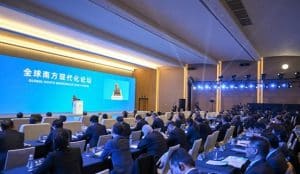It’s been more than 12 months since China launched a two-year scientific and technological research project on the prevention and control of PM2.5 and O3 pollution in May 2021, and now the mechanism that causes the formation of ozone pollution has been figured out, according to Zou Shoumin from the Ministry of Ecology and Environment (MEE).
Speaking at a recent press conference, Zou, director of the ministry’s Science, Technology and Finance Department, added that ozone pollution is long-term and complex, and its causes and transformation mechanism will need to be studied further.
“O3 pollution prevention and control has complex, dynamic, regional and long-term characteristics, and urgently needs scientific and technological support,” he said. The MEE will strengthen technical support and urge local governments to take effective measures to ensure that research results are realized as soon as possible.
Fine particulate matter (PM2.5) and ozone (O3) are two major sources of air pollution in China, and they both share the same precursors — nitrogen oxides (NOx) and volatile organic compounds (VOCs). In recent years, however, unlike PM2.5 concentrations that have continued to decline, ozone pollution has rebounded.
According to data released by the MEE on the concentration of major pollutants in 339 cities at prefecture level and above, in the first half of 2022, levels of five out of the six major pollutants fell. For example, the concentration of PM2.5 dropped by 5.9 percent year on year. However, the concentration of O3 increased by 4.3 percent compared to last year.
Since May 2021, the MEE has organized tracking and research work called “one specific policy for one city” for coordinated prevention and control of PM2.5 and O3 pollution. This involves sending 52 expert teams to 54 locations, including cities in the Beijing-Tianjin-Hebei area and Fenwei Plain, as well as areas around the junction of Shandong, Henan, Jiangsu and Anhui provinces, to conduct station tracking research as well as technical assistance and guidance.
Through 38 research studies, comprehensive observations and experiments organized in the Beijing-Tianjin-Hebei area, the MEE has deepened its understanding of the causes of O3 pollution and its influencing factors. Proposed coordinated prevention and control ideas and pollution reduction strategies of PM2.5 and O3 pollution have been set up, Zou said. All these have laid a solid foundation for the country’s scientific treatment of O3 pollution.



